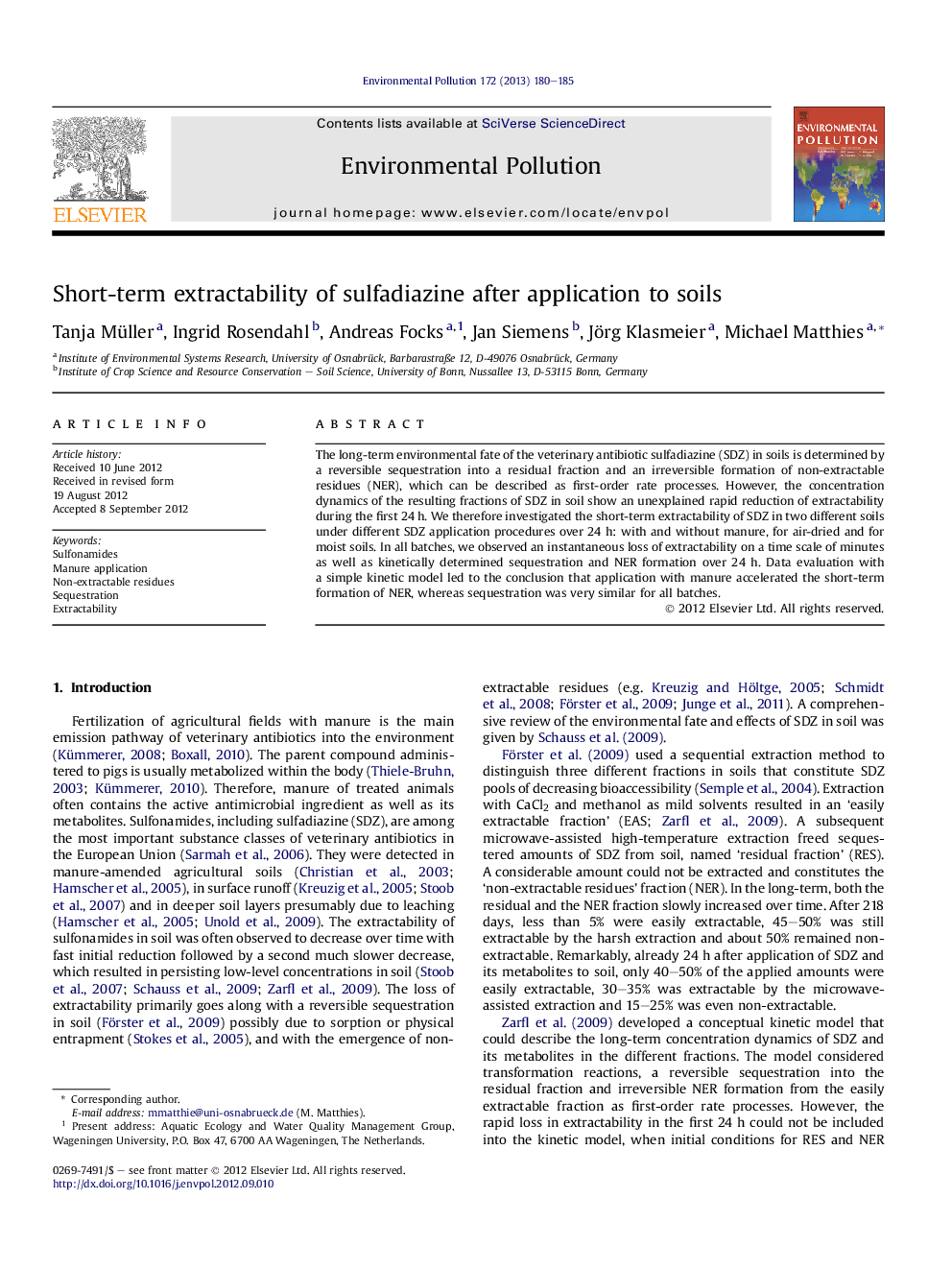| Article ID | Journal | Published Year | Pages | File Type |
|---|---|---|---|---|
| 4424731 | Environmental Pollution | 2013 | 6 Pages |
The long-term environmental fate of the veterinary antibiotic sulfadiazine (SDZ) in soils is determined by a reversible sequestration into a residual fraction and an irreversible formation of non-extractable residues (NER), which can be described as first-order rate processes. However, the concentration dynamics of the resulting fractions of SDZ in soil show an unexplained rapid reduction of extractability during the first 24 h. We therefore investigated the short-term extractability of SDZ in two different soils under different SDZ application procedures over 24 h: with and without manure, for air-dried and for moist soils. In all batches, we observed an instantaneous loss of extractability on a time scale of minutes as well as kinetically determined sequestration and NER formation over 24 h. Data evaluation with a simple kinetic model led to the conclusion that application with manure accelerated the short-term formation of NER, whereas sequestration was very similar for all batches.
► There is an instantaneous loss in extractability of sulfadiazine (SDZ) from soil samples. ► Further sequestration and NER formation are kinetically determined within 24 h ► Manure application accelerates short-term kinetic NER formation. ► Non-zero initial conditions for sequestered and non-extractable SDZ are tenable.
